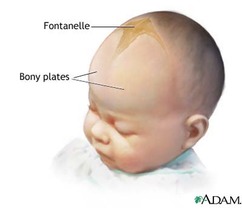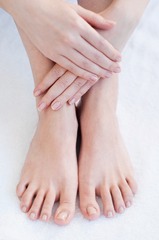Uncategorized
Peripheral Nerve Pain
All of us, not matter what age or health status, have some amount of restriction in our nervous system. This restriction will cause pain in the skin and perhaps other areas. Those of us with more health problems, by definition, have more of an issue in our nervous system. That is part of the cascade that leads us to poor health.
To keep the anatomy simple, all nerves originate from the brain or the spinal cord. They travel along a pathway that allows them to connect to organs, muscles, blood vessels, etc. and finally wind up at the skin and what is called peripheral nerve. John Hilton, who was an English surgeon, found that ANY irritation along a nerve path affected EVERYTHING along the path and caused the skin that the nerve goes to become sensitive. It is called Hilton’s Law.

Still keeping it simple, that means that if you can take the end of a ball point pen, press into the skin with its end, and find even one sore spot ANYWHERE on your skin, then you have an irritation somewhere inside as well. These sore spots are there long before you have any disease. They are there before your diabetes, your acid reflux, your endometriosis, your chronic migraines, etc.
If found early enough, all of these conditions can be treated (perhaps to the point of resolution) by releasing the nerve. Treating the nerve (either through effective trigger point injections, manual treatment of the peripheral nerve, myofascial release, neural prolo therapy, acupuncture or other manual treatments) will help to release the entire nerve and thus help all of the things that connect to it. In this way you can halt the progression of, and perhaps reverse, chronic disease.
So it is very important to have a practitioner that is skilled in this area as part of your healthcare team, AND it is important for you as the patient to make certain that your doctor and your practitioner (if they are different) not only know your complaints, but make sure they are checked from the aspect of the peripheral nerves.
I have had many patients show significant improvement after getting the peripheral nerves treated. Their pain diminishes (and after a few treatments does not return) and their health continues to improve.
To schedule your initial visit, please call the office for more details. The number is 317-228-9270.
As the Twig is Bent – Children

There are MANY things I could talk about when it pertains to infants, but they all share a common thread – our bodies only grow normally when there is freedom of motion. Birth is a serious hindrance to free motion! If you introduce any restriction, the body cannot overcome it and must adapt. The adaptations, if not treated, become permanent in adulthood. These can cause symptoms and disease.
Let’s take two relatively common issues with an infant – poor suck/latch and colic and explore them osteopathically.
In a normally developed newborn, poor suck is due to birth trauma. Period. That is a bold statement. When we are born the occiput is on four pieces that overlap a bit when we come through the birth canal. This allows our head to fit. What is supposed to happen is that, upon coming out of the birth canal, the babies first breath is supposed to decompress (expand) the portions of the occiput – this moves those parts back into a normal relationship. However, Robert Fulford, a pioneering DO who practiced in Cincinnati for many years, found that 95% of us did not take a good first breath. That leaves the occiput compressed in most of us into adulthood.
The parts on the sides of the occiput articulate with the first cervical vertebra and are called the condylar portion (they articulate with a groove in the 1st vertebra). If either of these get jammed, the hypoglossal nerve is effected. The hypoglossal nerve runs through an opening in this part of the occiput. This nerve controls movement of the tongue and, if it is not working efficiently, the tongue can’t move effectively. Thus, babies with poor suck (because they can’t move their tongue well) have a hypoglossal nerve that works inefficiently and a compressed occipital condyle. Releasing this compression in the occiput and the hypoglossal nerve can be like turning a light switch on in a child – they brighten up, start to feed (and feed well) and their diagnosis of failure to thrive goes away.
 These are babies that would have been bottle fed becasue mom would have been told that the baby could not breast feed. Breast feeding is SO important for good mouth, tooth and mental development that is recommended for every child (historically that is how your ancestors got here after all). Babies with compressed condyles and rescricted hypoglossal nerves would not get this opportunity. They will then grow in this pattern – which could mean that they have headaches, poor posture, the need for othodontia (braces), and chronic disease at some point during their life. This is in no way a comprehensive list of what could go wrong from this one issue either.
These are babies that would have been bottle fed becasue mom would have been told that the baby could not breast feed. Breast feeding is SO important for good mouth, tooth and mental development that is recommended for every child (historically that is how your ancestors got here after all). Babies with compressed condyles and rescricted hypoglossal nerves would not get this opportunity. They will then grow in this pattern – which could mean that they have headaches, poor posture, the need for othodontia (braces), and chronic disease at some point during their life. This is in no way a comprehensive list of what could go wrong from this one issue either.
Colic is another thing that is directly related to birth. When we are born the liver is not quite fully formed and the valve that delivers bile to the small intestine from the liver (the sphincter of oddi) may not be working in synchrony with the rest of the digestive system. If this happens, bile does not get adequately released and fats don’t get digested well and they ferment in the gut. The gasses from this process cause pain and the child tells you in no uncertain terms that things are not right.
The coronal suture in the head can also influence the pituitary and the hormones of the body that can add to colic. Releasing the suture and coordinating the motion between the head and the valves of the gut frequently relieves the symptoms during the treatment. More than one treatment may be required for full resolution, since this can be compared to “training” the gut to work correctly. Colic responds very well to osteopathic treatment.
Cold Hands and Feet
Do you suffer from cold hands and feet? It does not matter whether you are male or female, this is a significant issue. Medically speaking, this usually points to a condition known as hypothroidism. That means that your thyroid is not doing everything it needs to with efficiency. Although hypothyroidism can have an origin other than what I am about to describe, falls play a huge role in this condition.
When you have a fall on your rear end, physics come into play. Force is introduced into the body and that force has to go somewhere. The body has to follow the laws of physics. The law of conservation of energy says that energy can be neither created nor destroyed, only transformed. This means that your “fall” put energy into the body and that energy has to be transformed. Those are the laws of physics. If the force comes in very rapidly, then the body may not be able to handle the injury and a fracture my be the result. This is becasue the time of impact is very small and the body cannot adapt and change fast enough. It does its best, but the energy of the fall results in a fracture. This is the “transformation”.
If the SAME energy comes in just a tiny bit more slowly, then what? There is not a fracture (what medically would be called a pathologic fracture – something that would show up on x-ray), but what can happen is a physiologic fracture (think of this as energy storage). The tissue behaves as if it were fractured, but nothing shows up on x-ray. This is where many people seek medical attention and nothing is “wrong”. Nothing could be farther from the truth. The energy of the fall has been effectively stored in the body. The sacrum and coccyx may actually deform in response.
 From a Chinese medicine perspective, the two meridians that flow down the center of the body (the governor and conception vessels) do not flow freely. This is what I believe leads to the thyroid disturbance.
From a Chinese medicine perspective, the two meridians that flow down the center of the body (the governor and conception vessels) do not flow freely. This is what I believe leads to the thyroid disturbance.
Ligaments, when subject to impact, will constrict. There are a pair of ligaments in women that connect the sacrum to the uterus (uterosacral ligaments). If these ligaments tighten (secondary to a fall) then constipation, abnormal menstrual cycles (everything from amenorrhea – no periods, to menorrhagia – heavy flow) can be the result. It can also make conceiving a problem, because the uterus does not move correctly.
In men, the prostate can be effected.
Sitting may be painful, you may not be able to sit still – fidgeting all of the time, you may lean when you sit, you may be agitated most of the time, if you are female you make have irregular or painful periods or difficulty conceiving, if you are male, you may have prostate issues…and these are just some of the possible symptoms I have seen from falls. The sacrum and the coccyx (tain bone) can be effected.
Removing the forces stored in the body and releasing the tissues can set all of these things back to normal and not only improve thyroid conditions without medication, but also improve “fertility” and restore normal menstruation and relieve prostate issues.
Splayed Toes

I saw my third patient today with space between their second and third toes (counting from the big to to the small toe). It seems to be related to a shift in weight bearing from the great (big) toe (where it belongs) to the second or third toe. It seems that the body will then “group” the big and second toe together, then make those two toes function as one. This is what seems to be the mechanism behind the second and third toes moving apart. I made no progress when I diagnosed this issue with the patient laying on their back, but if I made them stand up and tested them, I noticed the weight shift from the great toe to the great/second toe “group”. I then treated what I found and have been getting pretty good results by approaching the feet in this manner. Physical manipulation and prolo therapy (injections of sugar water to stimulate ligament growth) may be used to get your foot to come back to where it started.
